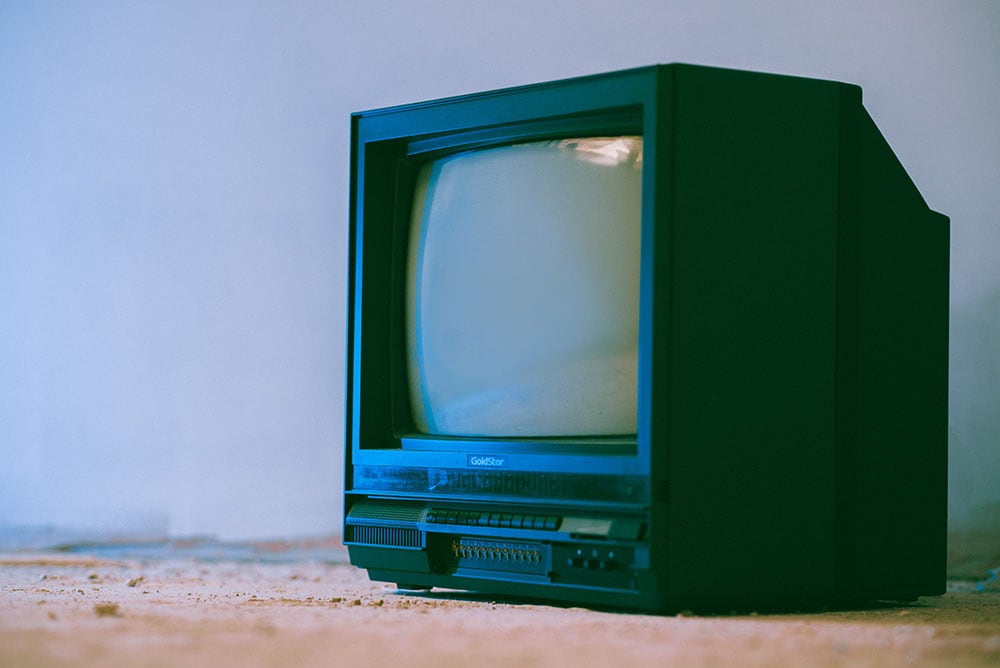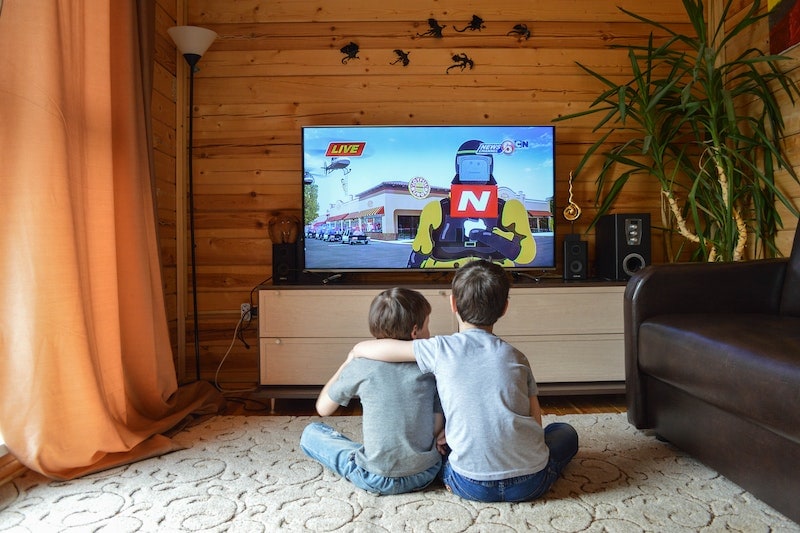Who Invented the Television, and When? (History of TVs)
-
Jeff Weishaupt
- Last updated:

You may have heard your grandparents talking about how they struggled to adjust their TV antenna to get a clear picture. Luckily, television has now transformed into an advanced digital device that always gives a sharp, high-definition (HD) picture.
There is no single inventor of television. History tells us that the first TV arrived on the scene in the 1940s and ‘50s. Year after year, we saw different scientists and engineers making unprecedented changes in the medium. The color was introduced in the ’60s, cable in the ‘70s, VCRs in the ‘80s, and HDs in the late ‘90s.
Today, in the 21st century, people prefer watching their favorite shows on their laptops, cell phones, and tablets. But don’t forget that it all started with the invention of TVs in late 1930.
Want to know more? Let’s have a deeper look at the history of TV.
A Look at TVs Through The Ages
The 1800s: An Early Form of Mechanical TV

The concept of television was under consideration by many scientists and engineers long before the technology existed. The idea was just there, and many people played their parts in developing the early form of TV. So, the credit doesn’t go to one or two scientists.
The origin of television dates back to the 1800s, primarily in the 1830s and ‘40s. Samuel F.B. Morse invented the telegraph at that time, a device that sends messages along wires while making beeping sounds.
Later, in 1876, Alexander Graham Bell developed the telephone, allowing humans to communicate through their voices for long distances. Then came Thomas Edison, who, along with Bell, thought about inventing a telephone-like device that could transfer images and sounds.
However, both of them remained to make speculations, and a German researcher turned this idea into a reality. In 1884, Paul Nipkow invented a mechanism for transmitting images along wires through spinning discs.
The device was named the “electric telescope.” But it was undoubtedly the earliest form of mechanical television.
The 1900s: The Invention of Electronic TVs
The actual work in the invention of TVs was done in the 1900s. Many renowned scientists, engineers, and researchers proposed ideas that gradually built on each other to give us the modern form of TV.
1900–1922: The Birth of CRTs

At the beginning of the 1900s, a physicist named Boris Rosing (Russian) and an engineer Alan Archibald Campbell-Swinton (Scottish) worked separately on the cathode ray tubes. This technology was earlier developed by Karl Braun, a German physicist.
Rosing and Swinton tried to improve Nipkow’s system by using cathode ray tubes instead of spinning discs. Swinton’s product had cathode ray tubes placed inside a camera and the receiver. The tubes in the camera sent the picture, and the receiver accepted it. This was essentially an early form of electronic television.
1923–1929

During the Russian Revolution, Rosing had a Russian-born engineer, Vladimir Zworykin, working as his assistant. In 1923, Zworykin started working at Westinghouse, a manufacturing company in Pittsburgh. He applied for his first-ever television license (or patent) for the “iconoscope.” The iconoscope also had cathode ray tubes instead of the old-school spinning discs.
On the other hand, in 1927, a Scottish engineer John Baird introduced the world with the first true television in central London. There were about 50 scientists present during the demonstration.
Braid soon established the Baird Television Development Company, which achieved the first television transmission to a mid-Atlantic ship. Not only that but the company also got credited with the first transatlantic transmission between New York and London. Baird was also accredited for giving the first stereoscopic and color TV demonstration.
Meanwhile, in 1929, Zworykin displayed his all-electronic TV system during a radio engineers’ convention. Luckily, the executive of one of the biggest communications companies, Radio Corporation of America (RCA), David Sarnoff, was also present at the convention.
1927–1939
Sarnoff was among the pioneers of developing televisions. He realized that television has a bright scope in entertainment and communication, like radio. In 1930, he became the president of RCA and hired Zworykin to work on improving television technology.
At the same time, Philo Farnsworth, a Utah-based inventor, was working on his own version of television technology. During his teenage years, Farnsworth came up with a remarkable invention. He used a vacuum tube to transform images into lines, transmit them, and change them back into original images.
In 1927, when he was just 21, Farnsworth made the prototype of the first-ever full-electronic television system. But soon, he got into a legal battle with RCA, which took him to court, claiming that Zworykin’s patent was better than Farnsworth’s invention.
In 1934, the US Patent Office gave the decision in favor of Farnsworth, and RCA had to pay $1 million to him as the licensing fee. This win could have made Farnsworth the father of television, but RCA’s patent appeal lawsuits took most of his limelight.
In 1939, Sarnoff demonstrated the television to the public in a grand event of the World’s Fair in New York City. His company broadcasted the festival’s opening ceremony and the president’s speech under its division, the National Broadcasting Company (NBC).
1940–1960
Television didn’t become mainstream in the US until 1940. Only a few hundred TV sets were sold in the country, with the radio still ruling the chart. In fact, about 80% of US households owned a radio set at that time.
The 1950s was the rise of television. By 1955, more than 50% of US households had TV sets. Considering the popularity, more TV stations were established, and more programs were broadcasted.
By the end of the 50s, television almost replaced radio and became the primary source of medium for home entertainment. The importance of television is also evident from the 1960’s presidential elections. The young candidate, John F. Kennedy, got the upper hand over his opponent, Richard M. Nixon, in television debates.
The 2000s: The Advent of HD and Smart TVs

Today, we have HD, digital, and smart LED/LCD TVs in our households. The devices have become slimmer, more advanced, and more accessible, with many features to benefit from. This medium has undoubtedly come a long way with many inventors and contributors.
Conclusion
Television is now a necessity for households all over the world. It keeps us entertained and connected to the world. From working on an antenna to satellite, TVs have transformed dramatically over the years, with so many scientists playing their part in its development and invention.
Starting from Samuel F.B. Morse to Philo Farnsworth and David Sarnoff, the history of televisions has a list of contributors that made what the medium is today. Coming out of the radio’s shadow and then making it obsolete is an achievement for TVs!
See also:
Featured Image Credit: Lisa Fotios, Pexels
Contents
